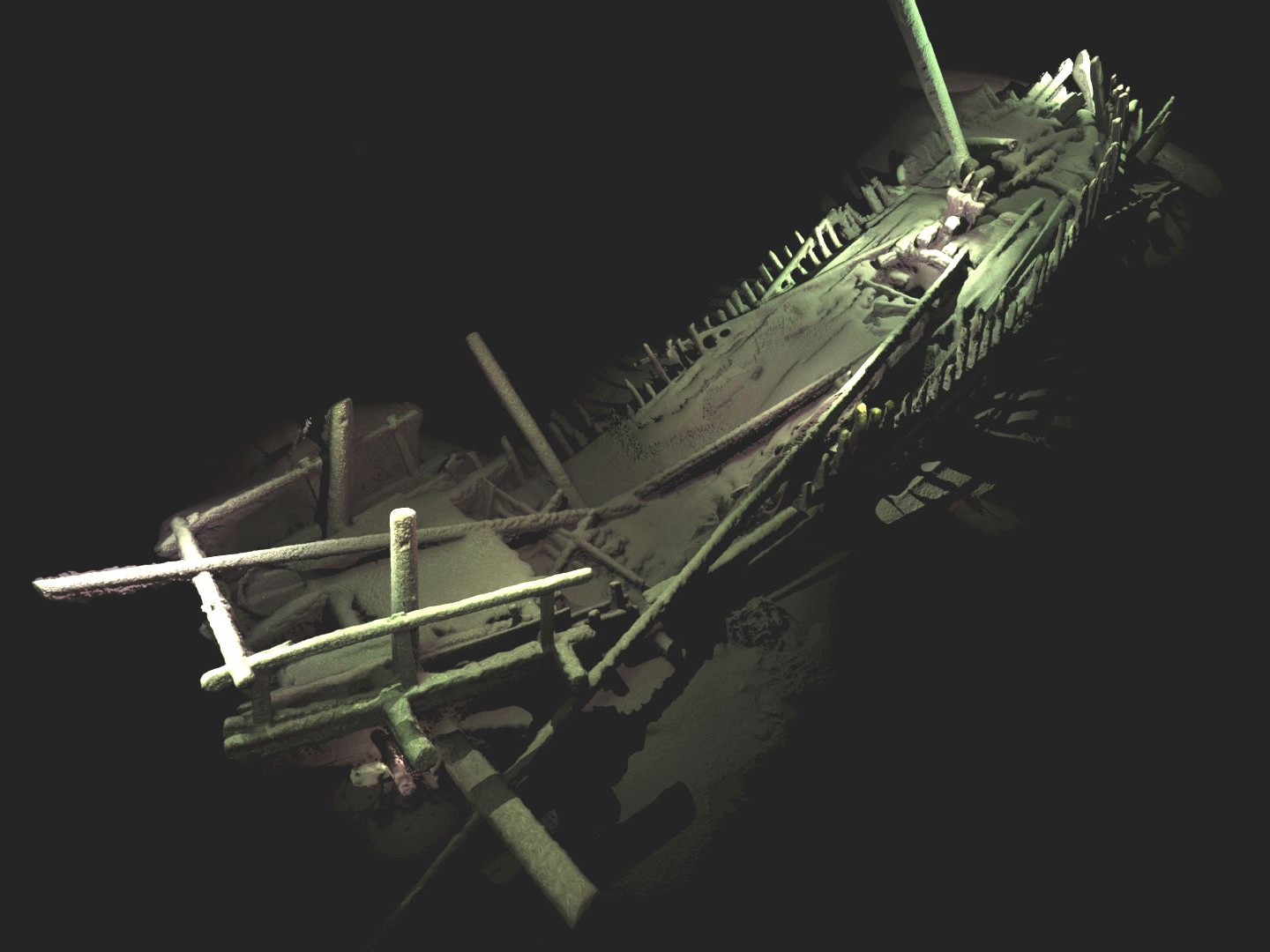The remains of tens of thousands of ships litter the floor of the Black Sea, their wreckage telling the stories of war, trade, and the risks of crossing a massive body of water. There are ships on the cold sea floor there that have never been seen before: vessels from the Ottoman and Byzantine empires, from Venetian and Genoan merchant colonies, from slave traders coming out of Central Asia, and more.
A recent expedition using new technology to help map the sea floor has just revealed more than 40 previously unknown shipwrecks, nearly perfectly preserved, since they lie deep on the floor of the Black Sea in a region where there’s no oxygen. For that reason, the wrecks have been kept safe from organisms that would normally chew through ropes and wood.
“The wrecks are a complete bonus, but a fascinating discovery, found during the course of our extensive geophysical surveys,” says Jon Adams, a Professor of Archaeology at the University of Southampton and principle investigator on the sea floor mapping project, in a press release.
The ships are a fascinating bonus historic discovery from a map of the sea floor – and researchers think there’s incredible potential for more to be discovered.
Here's what they've found.
The expedition is focused on exploring Bulgarian waters, trying to study how the sea changed over time and how those changes affected people living nearby.

The researchers are using using two Remotely Operated Vehicles (ROVs) to survey and map the sea bed.

The flows between the Mediterranean and the Black Sea separate waters and create a zone below 500 feet that is anoxic, very low in oxygen, which helps preserve everything that lies below.

This Ottoman shipwreck was discovered 300m deep; some newly discovered ships are a full half-mile down.

We knew ships like this medieval wreck existed from history but had never seen such a complete specimen until now.

The ROVs pass over wrecks like this Byzantine one, discovered 95m deep, and gather 3D data and thousands of images that can then be stitched together and turned into models.

Scientists are processing data like this 6m vibrocore from the Black Sea shipwrecks; the composition of sediment and material in the core will help tell the history of the area.

The ROVs take 3D recordings of wrecks like this Ottoman one that can then be processed into images by powerful computers working for days at a time. The ‘Work Class’ Supporter ROV has been added to the model to show how images are captured.

It's astonishing that you can still see organic material like coils of rope hanging from the timbers. Here you see the details of the stern and the carved tiller of the ship.

This ROV Surveyor Interceptor carries multibeam and sidescan sonar, sub bottom profiler, HD cameras, powerful lights, and a laser scanner. They're fast and can go deep — perfect for these unexplored depths.


